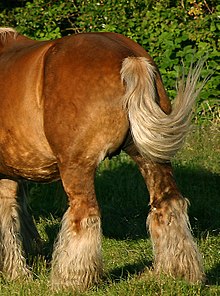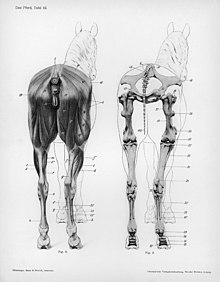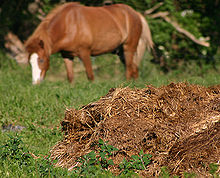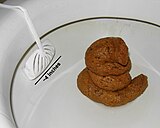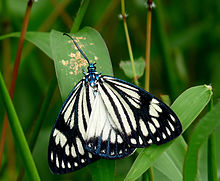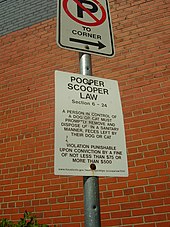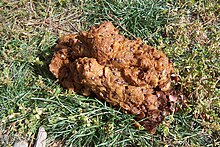PART III.
HORSEMASTERSHIP
EVERY good horseman will wish also to be a good horse-master.
The chance of succeeding today is better than ever before because of the vast wealth of experience inherited, and because the decrease in professional grooms has led to the rise of the owner-groom.
In dealing with horses there is a right and a wrong way of doing everything. Sometimes there are several right ways of doing the same thing. The man who does things the right way is said to possess horse sense. If he does instinctively he is said to be born with horse sense. For the remainder, the art is acquired by a pro-cess of study and experience. Sometimes the experience is painful, as when a kick is suffered or the loss of a favourite pony results from some wrong act.
In general, the "right" way in which to do anything with a horse is the "safe" way--safe to the groom and free from danger to the animal. It is not always possible to know the right way unless it is first demonstrated or taught. To teach a right way in all things is the object of the Pony Club.
HORSEMASTERSHIP AND
STABLEMANAGEMENT
This section of the book covers the entire care of horses and ponies under all conditions throughout the 365 days of the year, whether they be kept at grass or stabled.
Horses and ponies may be required for hunting, hacking, horse trials and horse events, gymkhanas, polo, being driven or used for breeding. Consequently it is necessary to have the knowledge and ability to deal with a wide variety of problems which comprise the following: handling; stable routine; watering; feeding; forage; grazing; exercise; conditioning; grooming; clothing; clipping; trimming; turning our correctly; travelling; shoeing; conforma-tion; minor aliments; nursing a sick or injured horse; breeds and types of ponies and the fitting and the care of saddlery.
HORSEMASTERSHIP
UNTHRIFTINESS
(Malnutrition)
This subject is of sufficient importance to warrant a section to itself. The horse that fails to maintain condition in spite of every care is a source of worry to the owner as also a matter of reproach among friends.
Condition. Horsemen employ an extensive vocabulary to describe the condition carried by a horse and much misuse of the terms is seen. In general these are:-- Gross condition; in which the horse is overfat, excess being particularly notable in the crest and loin regions. Good condition; in which the body is well covered, the coat sleek and the horse possessing a general appearance of well-being. Light condition: where the ribs are in evidence and the quarter muscles mean. Debilitated: where the general condition is below par and the horse unuseable. Emaciation: meaning skin and bone, an extreme rarely seen in Britain today.
Good condition. With careful management it is possible to keep a horse in good condition throughout the whole of the year
L
MANUAL OF HORSEMANSHIP
whether under the natural conditions of liberty at grass supple-mented by winter feeding, or the artificial conditions of hard keep stabled, as in a riding establishment. The objection to the above is that it is unnatural and because this is so duration of life is shortened. Most experienced horsemen prefer to subscribe to a system whereby the horse is worked hard for a season as a result of which condition is lost. This in turn is followed by a period of rest during which the lost condition is made good. This system is known as The Summering of Hunters and The Wintering of Polo Ponies. There are two main advantages: firstly this follows nature's intention in regard to the life cycle of the horse and secondly the working life of the horse is prolonged in that not only is the digestive system rested but also heart and limbs.
Other terms used by horsemen. A "Good Doer" is a horse which in spite of indifferent care and sometimes even neglect succeeds in maintaining good condition. Cobs are often good doers. A "Bad Doer" on the other hand is a horse which in spite of every care and attention never looks really well. They are expensive to keep and the explanation is generally elusive. A "Dainty Feeder" is a horse which is unusually fastidious in the matter of clearing up his feed. Such call for the exercise of great patience and ingenuity in over-coming the fault. In nearly all cases an explanation exists but it may take weeks or months of painstaking study and familiarity with the animal to arrive at the reason and to overcome it. Some horses for example will only feed at night, some only if a light is left in the stable, some only provided they are certain of not being molested by neighbours at feeding times.
Causes of Unthriftiness. These are as follows and they are of importance in the order given:--
Faulty watering arrangements. Nothing detracts so seriously from maintenance of condition in a horse as this, particularly water shortage.
Faulty feeding arrangements. The possibilities here are legion but perhaps the most common fault is the feeding of inferior quality forage. Stale, musty concentrates are not only unacceptable to a horse but actually harmful and in any case the nutritive value of such is low. The imperative need for adequate supplies of bulk in the feeding of the horse has been emphasised elsewhere in this book but the whole subject is greatly complicated today by modern methods of saving the hay crop whereby it is taken and baled too quickly and in semi-damp state. A sample of perfect hay today is indeed hard to come by and our horses suffer accordingly. The greatest care needs to be exercised when making purchases of hay so as to secure the very best procurable. Half the troubles in main-taining condition disappear if only a sweet nutritious hay feed can be offered. Irregular feeding hours, lack of rest periods in which to digest the feed, bullying by a stable companion at feeding times and many another such fault contribute to the detriment of condition.
Inadequate supplies of forage. It is almost impossible to kill a horse by overwork. Provided the quantity of forage offered is adequate to the work performed by the horse and the necessary time for feeding and rest are provided for, then condition should be maintained. Hence the rule to feed in proportion to the work done. The effect of overwork on the horse is "staleness" or "boredom" and not strictly "weariness" and stories of strings of overtired overworked horses leaving riding stables are not in accordance with fact.
Age. Age affects maintenance of condition. The crisis in the life of a horse shows at about 17 years of age when condition becomes more difficult to maintain and the working potential of the animal is reduced. Old horses suffer greatly from cold and special care is call for in winter time. Nevertheless it is a remark-able fact that many horses pass the crisis in life without showing
MANUAL OF HORSEMANSHIP
any deterioration whatever beyond a gradual slowing of pace. Where this occurs the horse may well go forward and lead a useful life up to 25 years of age or even longer. Such is a certain guarantee that the animal suffers from no physical disability whatever.
Deficiency conditions. These may be mineral or vitamin. Few horses do well on land lacking lime. Soil licking, gnawing wood or bark and even dung eating are manifestations of a craving for mineral. Soil sampling is a simple answer here and for the most part is a free service to agriculture. A vitamin deficiency is now well established as a contributing cause to lack of condition and where it operates the injection of a dose of the vital element is often attended by a quite remarkable improvement in the condition carried by the animal.
Dental irregularities. Dental defects are often a contributing cause, and in some cases the direct cause of lack of condition, due to inability to masticate properly without pain. The grinding process carried out by the back (molar) teeth in the horse results in sharp edges developing upon them which lacerate the cheek or tongue. Such is readily corrected by the simple process known as teeth rasping. Other defects include broken or split teeth causing much pain. In general dental irregularities in the horse are easy of correction and horsemen are advised to have a teeth inspection made of their horses yearly or every other year from the age of eight years onwards.
Worms. All horses harbour worms. It is possible to eliminate them by suitable dosage but within a few days they are in evidence again. In general, in a healthy body and a well conditioned horse, worms are of little consequence because the resistance of the animal is sufficient to overcome them. It is in the weakened body that they exert their evil work. A vicious circle is set up whereby the multiplication of worms is at the same time the result of debilitation as also its cause. Deworming is then called for.
HORSEMANSHIP
Many types of worm infest horses. The best known and most dangerous of these is the little Red Worm which makes its nests within the lining of the bowel thereby destroying its function and in extreme cases leading to scouring and emaciation. The inch long white Stromgyle inhabits the blood stream as well as the bowel and is sometimes the direct cause of the blocking of blood vessels, aneurisms and strangulation. Seat.or Whip worms are made evident by a soiling of the dock region and are contributing cause to malnutrition when present in excessive numbers.
It is possible to ascertain both the quantity and variety of worms infesting a horse by the simple process known as dung sampling. A small amount of droppings is submitted to laboratory tests whereby the number and type of worm eggs present reveals the degree and type of infection.
Each year, better and better worm drugs are discovered for use in the deworming of horses, not only more lethal against the worms themselves but less harmful to the horse. It is not advisable here to name the best worm medicine available for such is certain to be superseded eventually by a better preparation. Horse owners faced with a worming problem are advised to consult their veterinary surgeon for advice as to the latest and most potent preparation and the dosage.
Disease. Internal growths are a common cause of lack of con-dition in horses from 15 years of age onwards and this includes consumption. The last named condition should always be con-sidered in a horse that tends slowly to "fade-away" in spite of a ravenous appetite. Fortunately a simple test for this is available. Consumption in the horse is a disease of the belly or bones and not of the chest.
*The Manual of HORSEMANSHIP of the British Horse Society and the Pony Club
The British Horse Society makes acknowledgement to Educational Productions Ltd. for permission to reproduce illustrations by Joan Wanklyn from the book "Riding" by Mrs. V. D. S. Williams, and to Moss Bros. of Covent Garden and Geo. Parker & Sons, for the loan of bits illustrated on pages 29 and 30.
CONTENTS
Arrangement of this book.
The book is divided into three parts dealing with Equitation, Saddlery and Horsemastership.
Part I deals primarily with riding, the position of the rider and control of the horse or pony.
There follow two appendices about elementary dressage. Appendix I describes a system of training and Appendix II contains definitions of the various terms and movements. The appendices deal with more advanced riding and movements than the earlier sections of the book.
Part II deals with the fitting as well as with the care and cleaning of saddlery. It also describes how to put on and take off a saddle and bridle.
Part III includes the handling and care of horses and ponies at grass and in stables; also veterinary notes, the identification of horses and ponies and road transport.
The training of young horses and ponies is dealt with in a separate book "Training the Young Horse and Pony", also published by The British Horse Society.
An index will be found at the end of the book.
Published by
THE BRITISH HORSE SOCIETY
NATIONAL EQUESTRIAN CENTRE
KENILWORTH, WARWICHSHIRE, CV8 2LR
PRINTED IN ENGLAND BY
NORTHBOURNE PRESS GROUP LIMITED
COVENTRY CV2 3FU
PRINTED IN ENGLAND BY
NORTHBOURNE PRESS GROUP LIMITED
COVENTRY CV2 3FU
**Short list on the current definition of the following important words, the dock, dung and droppings.
Rump (animal)
**From Wikipedia, the free encyclopedia
The rump or croup, in the external morphology of an animal, is the portion of the posterior dorsum that is posterior to the loins andanterior to the tail. Anatomically, the rump corresponds to the sacrum.
The tailhead or dock is the beginning of the tail, where the tail joins the rump. It is known also as the base or root of the tail, and corresponds to the human sacrococcygeal symphysis. In some mammals the tail may be said to consist of the tailbone (meaning the bony column, muscles, and skin) and the skirt (meaning the long hairs growing from the tailbone). In birds, similarly, the tail consists of tailbone and tailfan (tail fan).
Some animals are subjected to docking, the amputation of the tailbone at or near the dock. These include dogs, cats, sheep, pigs, andhorses. Humans have a remnant tail, the coccyx, and the human equivalent of docking is coccygectomy.
Usage[edit]
Usage varies from animal to animal. Birds and cattle are said to have a rump and tailhead. Dogs are said to have a rump and dock.Horses are said to have a croup[1][2][3] (sometimes rump),[4] thigh or haunch, buttock, and dock.
Birds[edit]
In bird anatomy, the rump is the body immediately above the tail. The color of plumage on the rump is a characteristic widely used byornithologists to distinguish between related species, and sometimes also between males and females of the same species. Similarly, the silhouette of the tailfan is a characteristic widely used for purposes of identification, particularly in the field.
Dogs[edit]
In some breeds it is traditional for tails to be cut off (docked) at the dock.
Horses[edit]
See also: Back (horse)
In horse anatomy, the croup refers specifically to the topline of the horse's hindquarters and surrounding musculature, beginning at the hip, extending proximate to the sacral vertebrae and stopping at the dock of the tail (where the coccygeal vertebrae begin). Below the croup is the thigh or haunch. Behind the thigh is the buttock. On horses appearing in parades and other public ceremonies, the croup may be decorated with a pattern in the horse's hair, formed by applying hair gel or spray, then brushing patches of hair in opposite directions.
Applied to horses, the term "dock" has two additional uses. Its meaning may be extended to either the entire tail minus the skirt (i.e., synonymous with tailbone)[1][5] or the tailhead only.[6] In other equidae, it encompasses most of the tailbone, as most of that portion of the tail does not have long hairs. A lack of long hairs can be natural, as in zebras, donkeys, and the Przewalski horse, or artificial, the result of pulling, trimming, or shaving part of the skirt (see Horse grooming).
A sponge used to wash the hairless skin on the underside of the dock and other regions under the tail, protected by the dock, is called a dock sponge. Thus, the meaning of "dock" has been used to refer to the orifices beneath the dock, specifically the anus and vagina, creating a misapprehension that "dock" refers to the anus, as in, a horse's fundamental orifice is its dock.[7]
Manure
**From Wikipedia, the free encyclopedia
This article is about organic material used as soil fertilizer. For animal dung used for other purposes, see feces.
"Animal waste" redirects here. For other types of animal waste, see metabolic waste.
Manure is organic matter, mostly derived from animal feces except in the case of green manure, which can be used as organic fertilizer in agriculture. Manures contribute to the fertility of the soil by adding organic matter and nutrients, such as nitrogen, that are trapped by bacteria in the soil. Higher organisms then feed on the fungi and bacteria in a chain of life that comprises the soil food web. It is also a product obtained after decomposition of organic matter like cow dung which replenishes the soil with essential elements and add humus to the soil.
In the past, the term “manure” included inorganic fertilizers, but this usage is now very rare.
Contents
[hide]Types
There are three main classes of manures used in soil management:
Animal manure
Most animal manure consist of feces. Common forms of animal manure include farmyard manure (FYM) or farm slurry (liquid manure). FYM also contains plant material (often straw), which has been used as bedding for animals and has absorbed the feces and urine. Agricultural manure in liquid form, known as slurry, is produced by more intensive livestock rearing systems where concrete or slats are used, instead of straw bedding. Manure from different animals has different qualities and requires different application rates when used as fertilizer. For example horses, cattle, pigs, sheep, chickens, turkeys, rabbits, and guano from seabirds and bats all have different properties.[1] For instance, sheep manure is high in nitrogen and potash, while pig manure is relatively low in both. Horses mainly eat grass and a few weeds so horse manure can contain grass and weed seeds, as horses do not digest seeds the way that cattle do. Chicken litter, coming from a bird, is very concentrated in nitrogen and phosphate and is prized for both properties.
Animal manures may be adulterated or contaminated with other animal products, such as wool (shoddy and other hair), feathers,blood, and bone. Livestock feed can be mixed with the manure due to spillage. For example, chickens are often fed meat and bone meal, an animal product, which can end up becoming mixed with chicken litter.
Human manure
Main article: Reuse of excreta
Some people refer to human excreta as human manure, and the word "humanure" has also been used. Just like animal manure, it can be applied as a soil conditioner (reuse of excreta in agriculture). Sewage sludge is a material that contains human excreta, as it is generated after mixing excreta with water and treatment of the wastewater in asewage treatment plant.
Compost
Main article: Compost
Compost is the decomposed remnants of organic materials. It is usually of plant origin, but often includes some animal dung or bedding.
Green manure
Green manures are crops grown for the express purpose of plowing them in, thus increasing fertility through the incorporation of nutrients and organic matter into the soil. Leguminous plants such as clover are often used for this, as they fix nitrogen using Rhizobiabacteria in specialized nodes in the root structure.
Other types of plant matter used as manure include the contents of the rumens of slaughtered ruminants, spent hops (left over frombrewing beer) and seaweed.
Uses of manure
Animal manure
Animal manure, such as chicken manure and cow dung, has been used for centuries as a fertilizer for farming. It can improve the soil structure (aggregation) so that the soil holds more nutrients and water, and therefore becomes more fertile. Animal manure also encourages soil microbial activity which promotes the soil's trace mineral supply, improving plant nutrition. It also contains some nitrogen and other nutrients that assist the growth of plants.
Manures with a particularly unpleasant odor (such as slurries from intensive pig farming) are usually knifed (injected) directly into the soil to reduce release of the odor. Manure from pigs and cattle is usually spread on fields using a manure spreader. Due to the relatively lower level of proteins in vegetable matter, herbivore manure has a milder smell than the dung of carnivores or omnivores. However, herbivore slurry that has undergone anaerobic fermentation may develop more unpleasant odors, and this can be a problem in some agricultural regions. Poultry droppings are harmful to plants when fresh but, after a period of composting, are valuable fertilizers.
Manure is also commercially composted and bagged and sold retail as a soil amendment.[citation needed]
Before motor vehicles became common, horse droppings were a big part of the rubbish that communities needed to clean off roads.
Precautions
Manure generates heat as it decomposes, and it is possible for manure to ignite spontaneously if stored in a very large pile.[2] Once such a large pile of manure is burning, it will foul the air over a wide area and require considerable effort to extinguish. Therefore, large feedlots must take care to ensure that piles of fresh manure do not get excessively large. There is no serious risk of spontaneous combustion in smaller operations.[citation needed]
There is also a risk of insects carrying feces to food and water supplies, making them unsuitable for human consumption.
Livestock antibiotics
In 2007, a University of Minnesota study[3] indicated that foods such as corn, lettuce, and potatoes have been found to accumulate antibiotics from soils spread with animal manure that contains these drugs.
Organic foods may be much more or much less likely to contain antibiotics, depending on their sources and treatment of manure. For instance, by Soil Association Standard 4.7.38, most organic arable farmers either have their own supply of manure (which would, therefore, not normally contain drug residues) or else rely on green manure crops for the extra fertility (if any nonorganic manure is used by organic farmers, then it usually has to be rotted or composted to degrade any residues of drugs and eliminate any pathogenic bacteria — Standard 4.7.38, Soil Association organic farming standards). On the other hand, as found in the University of Minnesota study, the non-usage of artificial fertilizers, and resulting exclusive use of manure as fertilizer, by organic farmers can result in significantly greater accumulations of antibiotics in organic foods.[3]
Feces
**From Wikipedia, the free encyclopedia
"Fecal Matter" redirects here. For the American grunge band, see Fecal Matter (band).
"Body waste" redirects here. For other types of body waste, see metabolic waste.
| This article needs additional citations for verification. (September 2013) |
Feces (or faeces, see spelling differences), also known by many other names, is a solid waste product from an animal digestive tract, discharged through the anus or cloaca during a process called defecation. Urine and feces together are called excreta.
Collected feces has various uses, namely as fertilizer or soil conditioner in agriculture, as a fuel source or formedicinal purposes (fecal transplants or fecal bacteriotherapy, in the case of human feces).
Contents
[hide]Etymology and synonyms
The word faeces is the plural of the Latin word faex meaning "dregs". In most English-language usage, there is no singular form, making the word a plurale tantum;[1] out of various major dictionaries, only one enters variation from plural agreement.[2] The word is used more in biology and medicine than in other fields (reflecting science's tradition of classical Latin and New Latin); for example, in hunting and tracking, terms such as dung, scat, spoor, and droppings normally are used to refer to non-human animal feces, and in husbandry and farming, manure is common.
Stool is a common term in reference to human feces. For example, in medicine, to diagnose the presence or absence of a medical condition, a stool sample sometimes is requested for testing purposes.[3] In this use, the term stool derives from the noun stool of easeor close stool, a piece of furniture enclosing a chamber pot that could be used during the night and closed afterward, awaiting disposal during the day. But despite its origins, the term "stool" is now sometimes used for any feces, including those of non-human species. The term bowel movement(s) (with each movement a defecation event) is also common in health care.
As with urine, there are many synonyms in informal registers for feces. Many are euphemismistic, colloquial, or both; some are profane(such as shit), whereas most belong chiefly to child-directed speech (such as poo, poop, number two, doodoo, or doody) or to crude humor (such as deuce or turd).
Ecology
After an animal has digested eaten material, the remains of that material are discharged from its body as waste. Although it is lower in energy than the food from which it is derived, feces may retain a large amount of energy, often 50% of that of the original food.[4] This means that of all food eaten, a significant amount of energy remains for the decomposers of ecosystems. Many organisms feed on feces, from bacteria to fungi to insects such as dung beetles, who can sense odors from long distances.[5] Some may specialize in feces, while others may eat other foods as well. Feces serve not only as a basic food, but also as a supplement to the usual diet of some animals. This is known as coprophagia, and occurs in various animal species such as young elephants eating the feces of their mothers in order to gain essential gut flora, or by other animals such as dogs, rabbits, and monkeys.
Feces and urine, which reflect ultraviolet light, are important to raptors such as kestrels, who can see the near ultraviolet and thus find their prey by their middens and territorial markers.[6]
Seeds also may be found in feces. Animals who eat fruit are known as frugivores. An advantage for a plant in having fruit is that animals will eat the fruit and unknowingly disperse the seed in doing so. This mode of seed dispersal is highly successful, as seeds dispersed around the base of a plant are unlikely to succeed and often are subject to heavy predation. Provided the seed can withstand the pathway through the digestive system, it is not only likely to be far away from the parent plant, but is even provided with its own fertilizer.
Organisms that subsist on dead organic matter or detritus are known as detritivores, and play an important role in ecosystems by recycling organic matter back into a simpler form that plants and other autotrophs may absorb once again. This cycling of matter is known as the biogeochemical cycle. To maintain nutrients in soil it is therefore important that feces return to the area from which they came, which is not always the case in human society where food may be transported from rural areas to urban populations and then feces disposed of into a river or sea.
Human feces
Main article: Human feces
In humans and depending on the individual and the circumstances, defecation may occur from once every two or three days to several times a day. Extensive hardening of the feces may cause prolonged interruption in the routine and is called constipation.
Human fecal matter varies significantly in appearance, depending on diet and health.[7] Normally it is semisolid, with a mucus coating. The brown coloration comes from a combination of bile and bilirubin, which comes from dead red blood cells.
In newborn babies, initially fecal matter is yellow-green after the meconium. This coloration comes from the presence of bile alone. In time, as the body starts expelling bilirubin from dead red blood cells, it acquires its familiar brown appearance, unless the baby is breast feeding, in which case it remains soft, pale yellowish, and not completely malodorous, until the baby begins to eat significant amounts of other food.
Throughout the life of an ordinary human, one may experience many types of feces. A "green" stool is from rapid transit of feces through the intestines (or the consumption of certain blue or green food dyes in quantity), and "clay-like" appearance to the feces is the result of a lack of bilirubin.
Bile overload is very rare, and not a health threat. Problems as simple as serious diarrhea may cause blood in one's stool. Black stools caused by the presence of blood usually indicate a problem in the intestines (the black color is a sign of digested blood), whereas red streaks of blood in stool usually are caused by bleeding in the rectum or anus.
Sometimes food may make an appearance in the feces. Common undigested foods found in human feces are seeds, nuts, corn, and beans, mainly because of their highdietary fiber content. Beets may turn feces different hues of red. Artificial food coloring in some processed foods, such as highly colorful packaged breakfast cereals, can cause unusual coloring of feces if eaten in sufficient quantities.
Clinical laboratory examination of feces, usually termed as stool examination or stool test, is conducted for the sake of diagnosis, for example, to detect the presence of parasites such as pinworms and their eggs (ova) or, to detect disease spreading bacteria. A stool culture — the controlled growth of microbial organisms in culture mediaunder laboratory conditions — sometimes is performed to identify specific pathogens in stool. The stool guaiac test (or guaiac fecal occult blood test) is conducted to detect the presence of blood in stool that is not apparent to the unaided eye.
Fecal bacteriotherapy — also known as a fecal transplant — is a medical procedure wherein fecal bacteria are transplanted from a healthy individual into a patient.[8][9] Recent research indicates that this may be a valuable method to reestablish normal gut cultures that have been destroyed through the use of antibiotics or some other medical treatments.
Human feces collected for a specific practical use, such as for application as fertilizer, is known as night soil.
Odor
The distinctive odor of feces is due to bacterial action. Gut flora produce compounds such as indole, skatole, and thiols (sulfur-containing compounds), as well as the inorganic gas hydrogen sulfide. These are the same compounds that are responsible for the odor of flatulence. Consumption of foods prepared with spices may result in the spices being undigested and adding to the odor of feces.
The perceived bad odor of feces has been hypothesized to be a deterrent for humans, as consuming or touching it may result in sickness or infection.[10] Human perception of the odor may be contrasted by a non-human animal's perception of it; for example, an animal who eats feces may be attracted to its odor.
Pets
Pets can be trained to use litter boxes or wait to be allowed outside to defecate. Training can be done in several ways, especially dependent on species. An example is crate training for dogs. Several companies market cleaning products for pet owners whose pets have soiled carpets in the home.
Uses
Manure, fertilizer, and special products
The feces of animals often are used as fertilizer; see manure and guano. In northern Thailand, elephants are used to digest coffee beans for Black Ivory coffee, which is among the world's most expensive coffees.[11] Human feces also may be used as fertilizer (reuse of excreta in agriculture).
Fuel
Dry animal dung is used as a fuel source in many countries around the world by burning it.
Animals such as the giant panda [12] and zebra[13] possess gut bacteria capable of producing biofuel. The bacteria, Brocadia anammoxidans, can create the rocket fuel hydrazine from feces.[14][15]
Fecal transplant, gut flora transplant
In humans, fecal transplants (or stool transplant) is the process of transplantation of fecal bacteria from a healthy individual into a recipient who is suffering from a certain disease, such as irritable bowel syndrome. The resulting inoculation of healthy gut flora can sometimes improve the physiology of the recipient gut.
Elephants, Hippos, Koalas, and Pandas are born with sterile intestines, and require bacteria obtained from eating the feces of their mothers to digest vegetation.
Coprolites and paleofeces
A coprolite is fossilized feces and is classified as a trace fossil. In paleontology they give evidence about the diet of an animal. They were first described by William Buckland in 1829. Prior to this they were known as "fossil fir cones" and "bezoar stones". They serve a valuable purpose in paleontology because they provide direct evidence of the predation and diet of extinct organisms.[16] Coprolites may range in size from a few millimetres to more than 60 centimetres.
Paleofeces are ancient human feces, often found as part of archaeological excavations or surveys. Intact feces of ancient people may be found in caves in arid climates and in other locations with suitable preservation conditions. These are studied to determine the diet and health of the people who produced them through the analysis of seeds, small bones, and parasite eggs found inside. These feces may contain information about the person excreting the material as well as information about the material. They also may be analyzed chemically for more in-depth information on the individual who excreted them, using lipid analysis and ancient DNA analysis. The success rate of usable DNA extraction is relatively high in paleofeces, making it more reliable than skeletal DNA retrieval.[17]
The reason this analysis is possible at all is due to the digestive system not being entirely efficient, in the sense that not everything that passes through the digestive system is destroyed. Not all of the surviving material is recognizable, but some of it is. Generally, this material is the best indicator archaeologists can use to determine ancient diets, as no other part of the archaeological record is so direct an indicator.[18]
A process that preserves feces in a way that they may be analyzed later is called the Maillard reaction. This reaction creates a casing of sugar that preserves the feces from the elements. To extract and analyze the information contained within, researchers generally have to freeze the feces and grind it up into powder for analysis.[19]
Other uses
Some animal feces, especially those of camel, bison, and cattle, are used as fuel when dried.[20] Animal dung, besides being used asfuel, occasionally is used as a cement to make adobe mudbrick huts,[21] or even in throwing sports such as cow pat throwing or camel dung throwing contests.[22]
Kopi Luwak (pronounced [ˈkopi ˈlu.aʔ]), or Civet coffee, is coffee made from coffee berries that have been eaten by and passed through the digestive tract of the Asian Palm Civet (Paradoxurus hermaphroditus). Giant pandas provide fertilizer for the world's most expensive green tea.[11]
Dog feces were used in the tanning process of leather during the Victorian era. Collected dog feces were mixed with water to form a substance known as "bate." Enzymes in the dog feces helped to relax the fibrous structure of the hide before the final stages of tanning.[23]
Mycobacterium vaccae is a potentially beneficial mind-altering bacteria,[24] which initially was isolated from cow dung.
Social implications
In all human cultures, feces elicit varying degrees of disgust, a basic human emotion. Disgust is experienced primarily in relation to the sense of taste (either perceived or imagined) and, secondarily to anything that causes a similar feeling by sense of smell, touch, or vision. As such, human feces is regarded as something to be avoided diligently: expelled in private and disposed of immediately and without a trace. It often is considered an unacceptable topic in polite conversation and its mere mention may cause offence in certain contexts. An example from the ancient world of the repulsion people have felt toward feces is found in Deuteronomy 23:12-14.
The disposal of feces always has been associated with the lowest people among a society, the social outcasts, the pariahs, and the social discards. The Caste system in Indiawas created along the lines of profession and the dalits (untouchables) were left to do work related to human emissions. They did such work as cleaning and picking feces from streets, cleaning toilets, and working with dead bodies. Such practices are prevalent even today in the rural and small villages of India.
Animal feces
The feces of animals often have special names, for example:
- Non-human animals
- As bulk material – dung
- Individually – droppings
- Cattle
- Bulk material – cow dung
- Individual droppings – cow pats, meadow muffins, etc.
- Deer (and formerly other quarry animals) – fewmets
- Wild carnivores – scat
- Otter – spraint
- Birds (individual) – droppings (also include urine as white crystals of uric acid)
- Seabirds or bats (large accumulations) – guano
- Herbivorous insects, such as caterpillars and leaf beetles – frass
- Earthworms, lugworms etc. – worm castings (feces extruded at ground surface)
- Feces when used as fertilizer (usually mixed with animal bedding and urine) – manure
- Horses – horse manure, roadapple (before motor vehicles became common, horse droppings were a big part of the rubbish communities needed to clean off roads)
*ACKNOWLEDGEMENT
The British Horse Society makes acknowledgement to Educational Productions Ltd. for permission to reproduce illustrations by Joan Wanklyn from the book "Riding" by Mrs. V. D. S. Williams, and to Moss Bros. of Covent Garden and Geo. Parker & Sons, for the loan of bits illustrated on pages 29 and 30.
*The Manual of HORSEMANSHIP of the British Horse Society and the Pony Club
PART III. HORSEMASTERSHIP
CONTENTS
Arrangement of this book.
The book is divided into three parts dealing with Equitation, Saddlery and Horsemastership.
Part I deals primarily with riding, the position of the rider and control of the horse or pony.
There follow two appendices about elementary dressage. Appendix I describes a system of training and Appendix II contains definitions of the various terms and movements. The appendices deal with more advanced riding and movements than the earlier sections of the book.
Part II deals with the fitting as well as with the care and cleaning of saddlery. It also describes how to put on and take off a saddle and bridle.
Part III includes the handling and care of horses and ponies at grass and in stables; also veterinary notes, the identification of horses and ponies and road transport.
The training of young horses and ponies is dealt with in a separate book "Training the Young Horse and Pony", also published by The British Horse Society.
An index will be found at the end of the book.
Published by
THE BRITISH HORSE SOCIETY
NATIONAL EQUESTRIAN CENTRE
KENILWORTH, WARWICKSHIRE, CV8 2LR
PRINTED IN ENGLAND BY
NORTHBOURNE PRESS GROUP LIMITED
COVENTRY CV2 3FU


